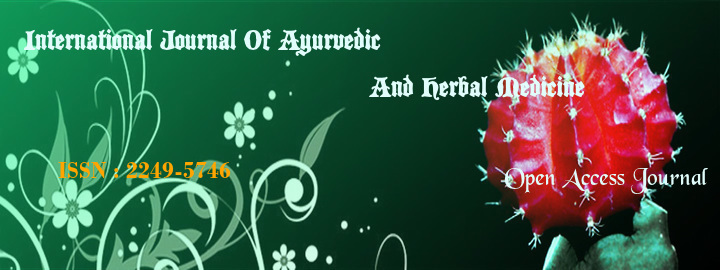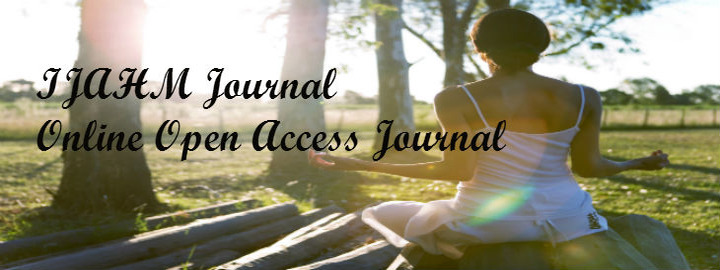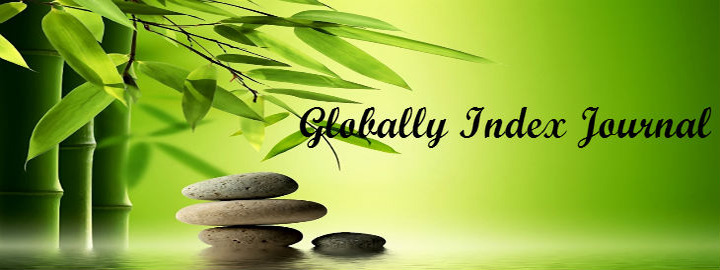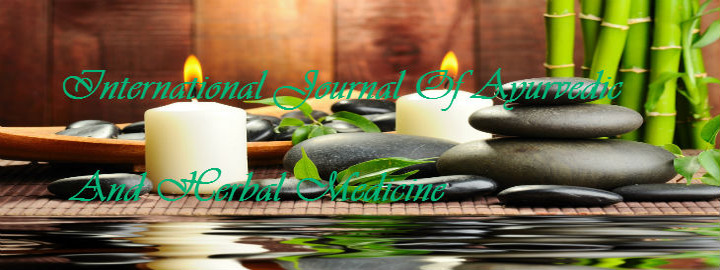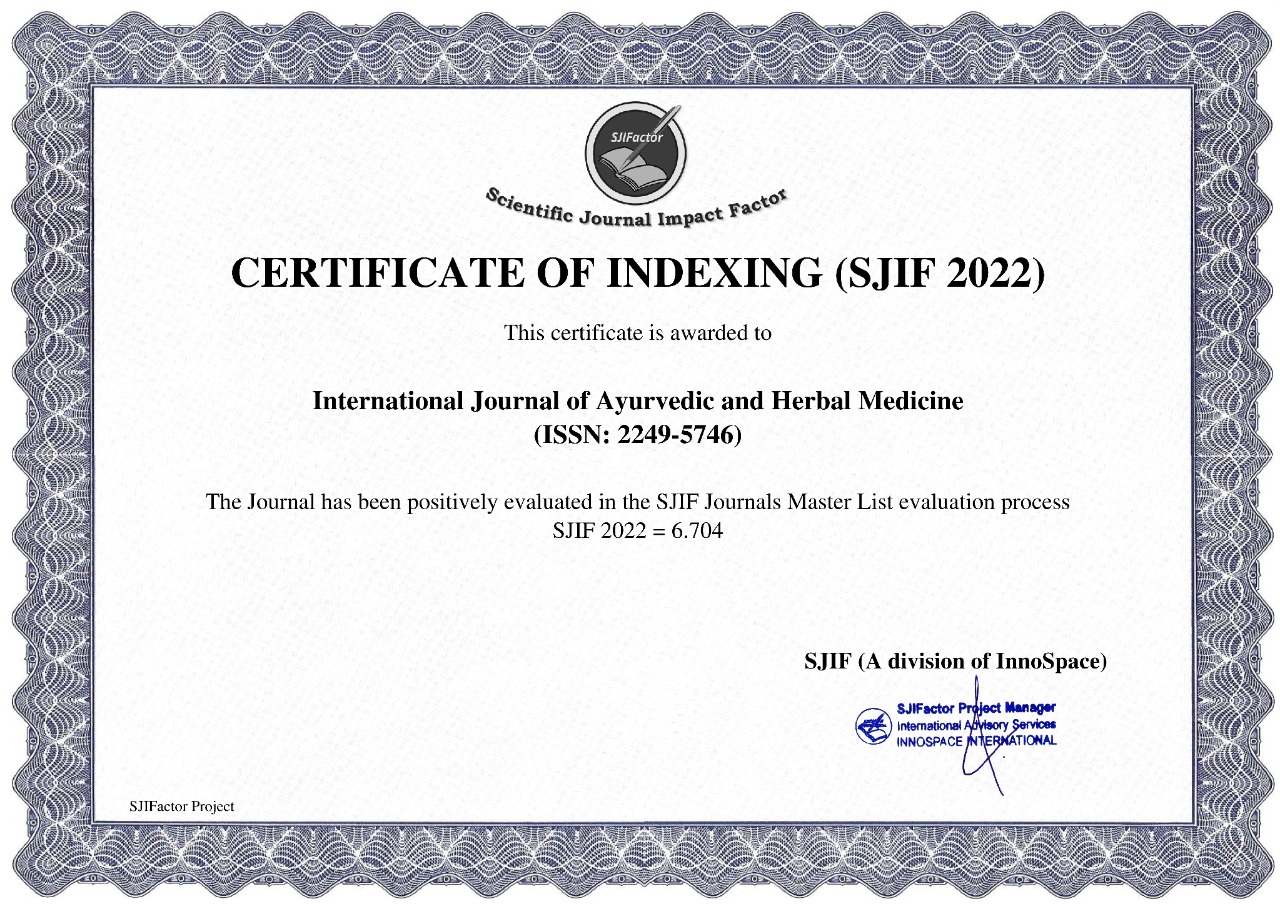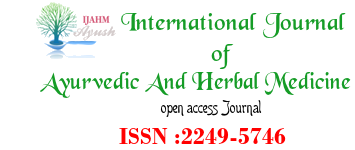


Dwivedi Amarprakash1, Anaya Ashish Pathrikar2, Yadav Birender Nisha3
DOI : http://dx.doi.org/10.18535/ijahm/v7i4.13
1M.S, PhD,Professor & Head, Department of Shalya Tantra, D.Y.Patil School of Ayurveda, Navi Mumbai, Maharashtra, India.
2M.D, Professor & Head, Department of Kayachikitsa, AVPM’S Ayurved Mahavidyalaya, Sion, Mumbai, Maharashtra, India.
3M.S.(Scholar), Department of Shalya Tantra, D. Y. Patil School Of Ayurved, Navi Mumbai, Maharashtra, India.
Corresponding Author : Dr. Nisha Birender yadav
M.S.(Shalya – Scholar) Dara Elcave, Army Colony, sector-9, E block, flat no 801, Nerul, Navi Mumbai.
ABSTRACT:
Varicose Ulcers are wounds which occur due to improper functioning of venous valves, usually of the lower limbs.It is one of the most serious chronic venous insufficiency complications, occurring in 70% to 90% of chronic wound cases. If this ulcer is not treated properly, it may get infected leading to cellulitis or gangrene and eventually may need amputation of the limb.
If the conservative management like compression stocking, foot elevation, antibiotics, regular dressing of wound fails, then surgical treatment like skin grafting, sclerotherapy, laser ablation or surgical correction of superficial venous reflux is done. However, recurrence of venous ulcers is common, ranging from 54 to 78% by the fifth year after healing.
In Ayurveda, varicose ulcers can be correlated with “sira jayna dusta vrana”. In Sushrut Samhita,where we get the most scientific description of wounds and its management. So these kind of wounds can be managed with the specific ayurvedic adjuvent therapies.
Considering all these, the present study was taken up with the objective of evaluating efficacy of shanshamni vati(internally) and jatyadi taila(local application)in the management of varicose ulcer. The symptoms like pain,oedema, hyper pigmentation,size of ulcer, granulation tissue were assessed during the treatment. The trial drug proved statistically significant in relieving theabove symptoms. The results revealed that the estimated treatment showed significant improvement (p<0.01) in all cardinal signs and symptoms. Adjuvant treatment with jatyadi taila(local application) and shanshamni vati(orally) statistically proved to be much potent and effective in management of varicose ulcer, hence study concludes ancient management is safe, easily available devoid of complication and has better acceptability.
KEYWORDS: shanshamni vati, jatyadi taila, Varicose ulcer management, vrana upakarma, sira janya dusta vrana.
Reference:
1. Margolis, Bilker W, Santanna J, Baumgarten M. Venous leg ulcer: Incidence and prevalence in the elderly. J Am Acad Dermatol. 2002;46:381–6. [PubMed] date 12-07-2017.
2. Concise Text book Of Surgery by Somen Das, 8th edition,published by S. Das publication 2014, old mayor’s court Calcutta, chapter no-16, diseases of vein, page no269.
3. Concise Text book Of Surgery by Somen Das, 8th edition,published by S. Das publication 2014, old mayor’s court Calcutta, chapter no-16, diseases of vein, page no268-269.
4. Bailey & love’s short practice of surgery by Norman S. Williams CRC press, Taylor & Francis Group 2013, 26th edition chapter- 57 page 908-911.
5. Sushrut Samhita Chikitsastan- Dr.Anantramram Sharma Vol- 2 chikitsathan edition 2001, chapter 1, dwivariyachikitsam, shlok no-8 page no146.
6. Dravyaguna Vijnyan [study of the essential medicinal plants in ayurveda] vol-2 by Dr.J.L.N.Sastry, Chaukhambha orientalia publishers, 2010 edition, chapter 3, Guduchi, page no33,34,35.
7. Bhavaprakash Nighantu( Indian material medica) by Bhavamishra, commentry by prof. Krishanchand Chunekar, Chaukhambha bharti academy publishers, edition-2010, chapter 3, shloka no 1-10, page no 257.
8. Sushrut Samhita Chikitsastan- Dr.Anantramram Sharma Vol 2- Chikitsastan, edition-2001, chp 31 Snehopayogik chikitsa adhyay. Shlok no 6- Page no 407.
9. Bhaisajya Ratnavali of Govinda Dasji Bhisagratna edited by Bhisagratna shri brahmashankar mishra, vol-2, Chaukhambha Sanskrit bhawan, edition-2006, shloka no 64,65,66,67. Page no 761.
10. Ayurved Shar- Sangraha, publisher Shri Baidnath Ayurved Bhawan limited. Edition-2013, page no 439.
11. https://www.google.co.in/amp/s/mavcure.com/guduchi-health-benefits/amp/ 12-07-2017.
12. Nagvalli D, Shri Vijaya Kirubha T, Hemalatha S. Karunambigai inospora Cordifolia (Guduchi-AMRUTA) possesses anti-inflammatory, analgesic, antipyretic and immuno suppressive. Medicinal And Aromatic Plant Abstract. 2006;103:350.
13. https://www.google.co.in/amp/s/mavcure.com/guduchi-health-benefits/amp/ 12-07-2017.
14. Baswa M. Rath CC, Dash SK, Mishra RK, Antibacterial activity of karanj (pongamia pinnata) and neem (Azadirachta indica) seed oil: a preliminary report. Microbios 2001;105(412): 183-89.
index







